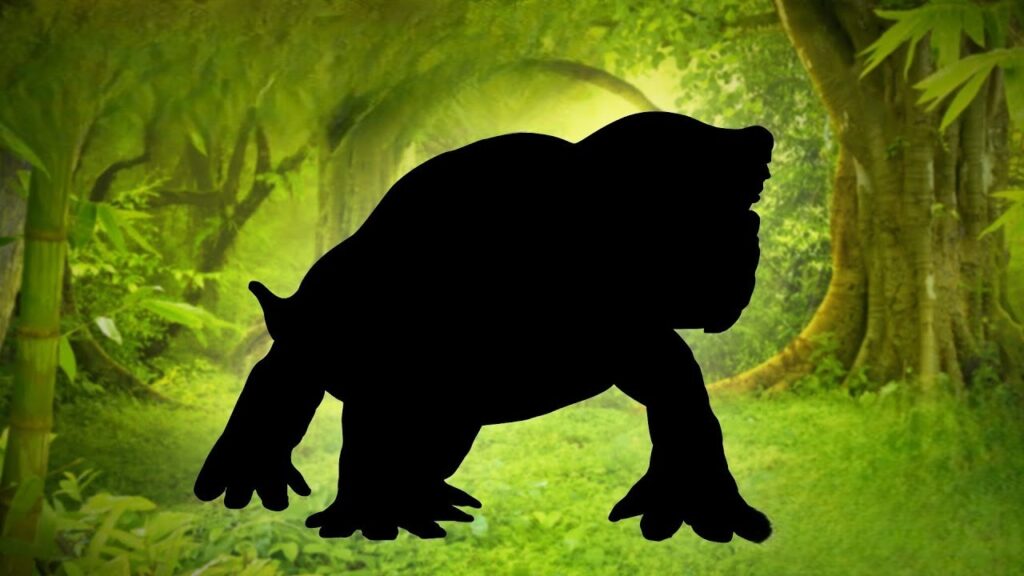
This is about Moon Jellyfish.
Let’s Reveal Hidden secrets of Moon Jellyfish such as:
- Immortatality Secret
- Reversing Age
- Making Clones
- Producing Light From Body
- Amazing Stinging Power
- Surviving Without Brain, Eyes, and Heart
Let’s begin !
So, What are Moon Jellies?
We can describe a moon jellyfish as an alien creature with a translucent body and having a moon-like bell that looks like an Alien UFO. Unlike an alien, it has long tentacles, but the moon jelly has small tentacles for capturing the prey and using it as self-defense when attacked.
Click to know : [Oldest Immortal Jellyfish] : Secret Key To Immortality !
Click to know : Why Can’t Human Regenerate Limbs ???
Click to know : “[God DNA] Proves Presence of God” says Scientists !
Click to Know: How This Vampire Dodder Steals 100 Genes from its Host Plant ???
Jellyfish are invertebrates, so they don’t have bones and have neither brain nor heart.
Surviving Without Brain
They have no brain but they do have a lot of nerves making a ring nervous system for controlling sensory and motor action.
These nerves help the jellyfish to perform automatic reflexes when stimuli like touch, temperature and salinity come. For example, their nervous system sends chemical signals to the tentacles to shrink their muscles for swimming smoothly.
No Heart, No Problem !

Without heart, they survive by responding to the stimuli like light, balance, chemical changes and touch coming from the surroundings. For this, they take the help of the ring nervous system, located just below the epidermis (outer layer of skin for protecting your body from harm).
Catching preys without eyes
As they don’t have eyes, they just keep floating and due to its bioluminescence, prey comes near and the ring nervous system senses it and sends signals to the tentacles for capturing the prey. This is the reason why jellyfish hunt their prey and survive without having any eyes.
No Teeth, but have Thin Hairs
They don’t have teeth but they do have thin hairs for pulling in prey into the stomach. Unlike humans who eat food by chewing, jellyfish swallow their prey whole. They digest their prey through the help of enzymes for breaking down the food into tiny parts and sucking the nutrients from them. After absorbing all the energy, they throw the waste through the mouth.
Do moon jellies feel pain?
As they don’t have a brain, so they don’t feel pain. Their whole body is made up of 95% of water and they have a ring nervous system, a set of nerves for sensing and responding to the stimuli in the surrounding.
Are moon jellies smart?

Yes, moon jellies are smart even if they do not have brains. They have a set of nerves called the ring nervous system, making them smart enough for capturing the prey and self defense when a predator arrives.
How fast can moon jellies swim?
According to a lab research, they swim at a speed of 0.007 meters per second which means they can swim 17 milliliters in 2.5 seconds.
What Colour are moon jellies?
They have a slightly bluish or pinkish color. Both of their bell and tentacles have translucent white color. Sometimes, the dome-shaped bell shows several shades of pink, blue or purple because of eating different prey.
Their bell has half-circles in the middle, which are reproductive tissues for helping females in internal fertilization of eggs (to get sperm from the mouth and fusing to the eggs).
Moon Jellyfish Sting
What happens when touching a normal Jellyfish ?

When touching a jellyfish, tiny hair triggers a defense mechanism and thus jellyfish will sting you. They also release venom onto your skin where you touched them and may get to the bloodstream. Very poisonous jellyfish make you dead within minutes and non-poisonous jellyfish give you no harm.
So, if you see a jellyfish washed on the beach, then don’t touch it because it may be poisonous and could make you dead through poison if it stings you.
So, Can I touch Moon Jellies?
Yes, you can touch them without any fear because they are non-poisonous, don’t hurt and are safe to humans for touching.
They are nearly painless when you touch them, you just feel a slight reaction even if it stings you because it can’t pierce through human skin. So, don’t freak out when it stings you !
Got Sting, Now What ?
If you have got sting, there’s no need to panic, its not serious and cannot penetrate human skin. What they live is just a minor sensation. If you are a sensitive person, then feeling a little bit irritation is common for you and may last for 10 days depending on your sensitivity. There’s no need to worry, irritation will go soon and you will be fine.
What to do if irritation is not recovering?
You can the fastest way to cure a jellyfish sting by using a First Aid Care. You just have to carefully remove visible tentacles with the help of fine tweezers. Then, put hot water on your skin that should be 110 to 113 Fahrenheit (43 to 45 Celcius).
If simply putting hot water doesn’t work and still you feel irritated then, put a paste of Baking Soda and Sea water onto the contact area.
Use an over-the-counter anti-itch cream like diphenhydramine (Benadryl®) to relieve irritation. Please consult a doctor if the irritation is extreme for a better medication. If someone gets stung in the mouth, in or around eye, on a significant area of skin, or in the genital area, seek medical attention.
Sting of Most deadliest jellyfish
Australian box jellyfish is the deadliest and most venomous jellyfish. When you see them, won’t look dangerous but if it stings then, you will be dead within minutes. Their scientific name is Chironex fleckeri and are often found in warm coastal waters of the Indo-Pacific and Northern Australia Oceans.
You can survive the jellyfish like moon jellies which have no poison, but you cannot survive the poisonous ones like box jellyfish.
Some of the box jellyfish are so poisonoius that they can make you dead within minutes. The remaining box jellyfish makes a person dead in 4 to 48 hours. The person becomes dead because of Irukandji syndrome, a painful and lethal condition caused by jellyfish sting. In this condition, a person has to suffer severe pain, hypertension and life-threatening cardiac problems.
Which jellyfish has the most painful sting?
The stings of the Irukandji jellies are so painful that they can induce fatal brain hemorrhages, are already sending 50-100 individuals to the hospital each year. You can get the idea of how powerful the sting is “its 100 times greater than a cobra and 1,000 times greater than that of a tarantula,” Said Robert Drewe.
Sting of Non-deadliest Jellyfish

The sting of non-deadliest (non-venomous) jellyfish lasts up to 2 hours, so you get relief from severe pain after that much time. However, the problem of itching may last up to 1 week. If the sting of the jellyfish has severely hurted your skin, then the lines of red or purple color could last for even weeks.
You should immediately go to the hospital for diagnosing the injury and get treatment quickly after being stung by a jellyfish.
Predators of Moon Jellies
Sea anemone commonly kills and eats Moon Jellies that come into their range. While other predators like Tunas, Sharks, Swordfish, Sea turtles, Penguins, Spadefish, Sunfish, Loggerhead turtles also kill them. When they are washed up on the beach, they are killed by foxes and other terrestrial mammals and birds. Some people in East Asia also like to kill and eat them.
Are moon jellies predators?
Yes, moon jellies are predators because they are carnivorous and feed on planktons such as fish eggs and larval fish. They also eat small fish, crustaceans, and mollusks.
Moon Jellyfish Classification

Kingdom: Animalia
Family: Ulmaridae
Scientific Name: Aurelia aurita
Genus: Aurelia
Species: aurita
What class do moon jellies belong to?
They belong to class Scyphozoa and phylum Cnidaria. The name so kept is due to translucent bell and found pretty much everywhere around coastal areas.
Life Cycle of Moon Jellyfish
They complete their life cycle in 4 development stages:
- Larval
- Polyp
- Ephrae
- Medusa
What is the lifespan of a moon jellyfish?
Their lifespan is 1 year if you carefully keep it in your aquarium. Due to its polyp making process (making clones in huge numbers), they can survive up to 25 years.
Do moon jellyfish have genders?
Yes, Moon Jellyfish have genders , you can know whether its male or female by looking at its sex glands. Male sex gland has pink color while female sex gland has brown color.
What is the biggest moon jellyfish?
The biggest moon jellyfish is Aurelia aurita (Linnaeus, 1758) with a diameter of 15-40 centimeters (10-16 inch). As it is translucent, you can easily recognize this jellyfish by seeing its four horseshoe gonads located in its bell.
Moon Jellyfish Immortality

Are moon jelly immortal?
Yes, moon jelly are immortal because they have the secret power of reversing its age, regenerating lost parts, and making polyps (clones) in huge numbers. They use this secret power if they have to survive through extreme conditions like not getting food, damage to their body, and when fertilization doesn’t happen.
Can jellyfish cheat death?
Yes, the jellyfish species of Turriptopsis dohrnii cheats death easily by reversing its life cycle, so they bend the rules of life and death. After death, their body starts to decay, convert into many polyps and new jellyfish are born.
Moon Jellyfish Fun Facts
Some fun, cool and unique facts about moon jellyfish are:
1. No brain due to 98% water
2. Effective predator in their surrounding
3. 300,000 species total
4. Older than dinosaur, came to earth-700 million years
5. In 1991, researchers took the moon jellyfish into space for experimenting whether adult jellyfish behave differently or not in a gravityless environment.
6. They have jet propulsion for swimming at high speed in water if predators attack.
7. Moon jellyfish possess stinging powers for using it as self defense and capturing the prey.
8. Fossils of jellyfish suggest they existed over 500 million years ago and possibly 700 million years or more, so jellyfish are even older than dinosaurs by 250 million years.
9. Jellyfish is the first multi-organ animal that came to the earth.
What makes moon jellyfish special?
Mind-blowing mechanisms like jet propulsion and stinging make moon jellyfish special. They use jet propulsion to swim at super high speed when they fear predators. They use stinging as self defense and for capturing the prey.
Do moon jellyfish glow in the dark?
Yes, Moon Jellyfish glow in the dark because of a phenomena called bioluminescence where oxygen reacts with luciferin to give light (a substance present in luminescent organisms like fireflies).
Moon Jellyfish on Beach
What to do if you find a jellyfish on the beach?
Jellyfish often come on the beach because of strong storm or tides and also they are not so good swimmer.
If you see a jellyfish on the beach and don’t know what to do, then just keep everyone away from that jellyfish because they can hurt you, even if they are dead, they still have venom present in the tentacles for stinging you. If they are very poisonous, they can make you dead within minutes and if they are non-poisonous, you will feel nothing. So, the better choice is not touching jellyfish on the beach.
In an experiment, Moon Jellyfish lived up to 48 minutes, so they can survive for this much longer time even outside of ocean water. Most of the jellyfish dies quickly when washed up on the beach. Even if they are dead, they can sting you because their stinging tentacles are still active.
After, you have touched moon jellyfish, you should not rub your eyes or put finger in mouth because stinging cells from their tentacles could come to your hands. This may cause serious problems and even feel pain.
Is it OK to pick up moon jellyfish?
Yes, it’s totally fine to pick up moon jellyfish, not other jellyfish because they don’t harm humans. I would not recommend you picking them as it could be other species of jellyfish which could have deadly stings.
Yes, you can pick up a moon jellyfish as they are safe because they cannot penetrate through your skin. They are so friendly and least dangerous jellyfish to humans.
A dead moon jellyfish can sting you because the body structure of nematocysts (i.e a special cell in tentacles releasing venom when self defense activates) is active for a long time even after its death.
The clear jelly blobs on the beach are salps, often called jellyfish eggs.
Can you swim with moon jellyfish?
Yes, you can swim with moon jellyfish because they can’t sting humans and are safe for touching — giving you awesome swimming experiences.
Are moon jellyfish conscious?
No, moon jellyfish are not conscious because they have neither a brain nor heart, so they are unaware of their own existence.
Moon Jellyfish Florida

Does Florida moon jellyfish sting?
Moon jellyfish, Cassiopeas, and Cannonball jellies found in Florida don’t have powerful sting, rather you will feel just a mild sensation. So, it’s good to be cautious because the sensitivity of people can alter from one person to another.
What is the deadliest jellyfish in Florida?
The deadliest jellyfish in Florida is Portuguese Man of War [Physalia]. It is easy to recognize because it has a clear inflatable float which is always present on the top of water, giving a little balloon look.
Why do moon jellies wash up on shore?
They wash up on shore because of high tides or high winds due to strong storms.
Moon Jellyfish for sale
Can you pet a moon jelly?
Yes, you can pet a moon jelly because you can find them anywhere for keeping as pets. If you want to pet a moon jelly, then keeping it in a proper aquarium will make your jelly live about 1 year (12 months) to 15 months.
Can you own moon jellyfish?
Yes, you can own moon jelly and keep them as pet jellyfish. They are cute animals giving cool look, making it worthy for owing a pet.
Are moon jellyfish hard to keep?
No, it’s not hard to keep moon jellies as they’re easy for taking care of and providing husbandry needs are also well established. They love the warm and temperate water, helping them in breeding commercially because of flexibility and surrounding friendliness.
What do you feed pet moon jellyfish?
You will need to feed your moon jellyfish everyday and be well fed. Artemia, krill and cutup seafood are the best choice for eating or feeding to your jellies. Looking at the opaque white color is really a relaxing moment, you should give it a try.
Can moon jellyfish be pets?
Yes, moon jellyfish can be pets because they are found anywhere commonly and are harmless to you if it stings you. They are also used as pets by many people and you should give it a try. They have about 12 to 15 months which is a good choice for keeping them as pets.
Do moon jellyfish need oxygen?
Yes, the moon jellyfish need oxygen as they don’t possess any respiratory system such as lungs, gills or trachea. Their thin membranes help them take oxygen by diffusing from the environment water; that water enters the gastrovascular cavity and absorbs oxygen and throws out low oxygenated water.
Do moon jellyfish need a heater?
If the temperature of the water in the aquarium goes down, you will need a heater for keeping water warm from 18-24°C, which they love. Sometimes, there are no requirements of any heater because they can easily adapt to the environment.
How toxic are moon jellyfish?
They are non toxic and completely safe for humans while there are some deadly jellyfish like box jellyfish, which makes you dead within 5 minutes.
Are all jellyfish venomous?
No, all jellies are not venomous, for example, moon jellies are completely safe for humans, you can touch it without the risk of stinging. Even if the jelly stings, you will feel a mild sensation and that is not venomous.
There are many non-venomous jellyfish from small sea nettles to large moon jellyfish. A handful of them are so venomous, within five minutes, you will be dead such as box jellyfish.
Does jellyfish sting clear?
Jellyfish don’t sting humans for a clear purpose, they just sting when they feel fear and use stinging power for capturing prey and eating them.
Can moon jellies survive out of water?
No, moon jellyfish can’t survive out of water because they also need oxygen from sea water. When there is a lack of oxygen or dry land, they cannot survive longer.
Moon Jellyfish Fish Tank
How many gallons do moon jellyfish need?
You will need at least two gallons of water for every jellyfish, suppose you possess 5 jellyfish, your tank should be no smaller than 10 gallons.
Can Moon Jellyfish live in a fish tank?
Yes, moon jellyfish can live in a fish tank, but need an aquarium specially designed for them, have no corners, a constant flow of water with a safe outlet.
Do you have to clean a Moon Jellyfish tank?
Yes, you need to make the Moon Jellyfish Tank clean by changing the water everyday and giving care with appropriate temperature.
FAQs
Do moon jellies have babies?
Yes, moon jellies have babies when sperm are released and fuses to the eggs of female moon jellies. After fusion (fertilization of sperm and egg), larvae come and grow into the polyps.
Are moon jellies asexual?
Yes, they are both asexual and sexual.
In sexual reproduction, they do reproduction by external fertilization where sperm and eggs meet into the water column and finally the larva came from egg hatches and stays in pelagic environment for few time.
In asexual reproduction, they do reproduction by budding off its body into polyps (child state) state in huge number and all those polyps once again grow into the mature moon jellies.
How do moon jellyfish poop?
They poop all the wastes through their mouth (the opening through which food entered).
Do moon jellyfish have blood?
They don’t have blood because it is made up of 95% of water and it’s the body plan which has been working for 500 million years.
How many tentacles do moon jellyfish have?
They have many tentacles (more than 200 tentacles). These tentacles have stinging cells for helping in capturing prey and using them as defense.
Are moon jellies mammal?
No, they are not mammals because they lay eggs and to be mammals, an organism must give direct birth to a baby, not lay eggs like moon jelly.
One more thing, they are invertebrates, so it doesn’t come under vertebrate phylum and thus cannot be mammal.
Is a moon jellyfish invertebrate?
Yes, they are invertebrates which have four opaque half-circles on a bell and a 16-scalloped bell margin. They have soft muscles and do not have any bones.
How long do moon jellyfish live in the wild?
They live for 1 year in the wild. They can also survive up to 25 years due to the power of going back into its child state and making so many clones of itself.
Are moon jellyfish friendly?
Yes, the moon jellyfish are friendly because they give no harm to humans.
Do walleye pollock eat moon jelly?
No, the Walleye Pollock doesn’t eat them but these species eat zooplankton foods like fish larvae.
Do moon jellies eat kelp?
It is unknown that moon jellies eat Kelp (a large brown algae seaweed) but sea urchins love to eat them.
How much are moon jellies worth in Animal Crossing?
They are worth 600 Bells in Animal Crossing and also sells for ACNH with 600 Bells.
How deep do moon jellies live?
They live at a depth of 600 feet in the epipelagic zone.
How long are moon jellyfish tentacles?
Their tentacles are about 1 to 5 centimeters long.
How often do you feed moon jellies?
You have to feed them once a day everyday. You can easily know whether your jellyfish is getting a good amount of food or not by seeing the contents present in the stomach.
Are moon jelly nocturnal?
No, they are not nocturnal; instead, their movement in the night decreases as compared to day ones and some study suggests the species also enter a sleep-like state.
How big of a tank do moon jellies need?
They need a big tank having capacity of 20 and 70 gallons each for Pulse 80 and Pulse 280 jellyfish aquariums.
How long do small moon jellies live?
Whether they are small or big, live for only 1 year if they are in the wild and 12 – 18 months when they are in an aquarium with proper human care.
How to cook a moon jellyfish?
Below is a video for cooking amazon jellyfish after catching it.
How fast do moon jellies grow?
You can get the understanding of how fast they grow, by knowing they live up to only 1 year in the wild and only 12-18 months in the aquarium when kept with proper care.
Can moon jelly sting dogs?
No, they do not have that level of stinging power, instead they just give a small sensation. So, the species also could not sting dogs and dogs also eat them easily. Sometimes, dogs vomit them because of the mild sensation caused by that species.
Can you catch the jellyfish Pokemon in Moon?
No, you cannot catch it because you are forced to make Ultra Beast get out by decreasing the health level below a certain point.
What type of water do moon jellies live in?
They live in brackish water because it has a low salt content of 0.6 percent. They live in the warm waters found in the coastal areas because their favorite survival temperature is 9 degree Celsius and 19 degree Celsius.
Do moon jelly reproduce in captivity?
Yes, they reproduce in captivity. You can bring them in an aquarium with sea water and still they will reproduce and increase their number.
What is the purpose of moon jellies?
The purpose of moon jelly is increasing the chance of survival by thriving in polluted and low-oxygen water. This purpose also helps in conversion of pelagic organic matter. When their number increases, due to the increasing feeding on copepods and fish larvae, it could affect the whole plankton community.
How much are moon jelly worth?
Moon jellies found commonly is worth $30 to $60, whereas if you want a large moon jelly, then it costs $55 to $75. So, on average, a moon jelly costs $25 to $150 according to which type you purchase.
What temperature do moon jellies live in?
They live in the temperature of ocean water between 45 and 70 degrees Fahrenheit because they provide them the best chance of survival as prey in high numbers are found.
What zone do moon jellyfish live in?
They live in the epipelagic zone and found more commonly near coast areas because preys occur in high numbers. As they are not very hard swimmers, they are often pushed on the sea shore because of strong storms or high tides.
Is it legal to own moon jelly?
Yes, it is completely legal to own them because it is safe for humans. You just need an aquarium (fish tank) containing seawater for keeping the jellyfish.
How much are moon jelly worth in Animal Crossing New Horizons?
They are worth a price of 600 because you can do its crossing in available months of July to September (Northern hemisphere) and January to March (Southern hemisphere).
How many babies canmoon jellies have?
They can have more than 1 thousand babies when they bloom for a single time. This number could change because the bloom formation depends on many factors such as oxygen level in ocean water, nutrients from food, temperature of water, and current of water in the ocean.
How many moon jellies are there?
There are more than 1,500 species of moon jelly present on the earth and still many are unknown.
Where are moon jellies found?
Moon jellies are found in shallow bays and harbors of tropical oceans, they love the warm water present in the coastal areas.
How much do moon jellies weigh?
Moon jellies weigh up to 0.005 pounds (0.002 kilogram) and 0.07 pounds (0.03 kilogram).
What is the average size of moon jellies?
The average size of adult moon jellies is 9.8 to 16 inches in diameter and 3 inches tall. Most of the jellies only can grow up to the size of 7 or 8 inches in diameter.
When was moon jellies discovered?
The date at which they were discovered is unknown but the fossil of jellyfish suggest they have been on earth from 700 million years ago, even older than the dinosaurs.
Can you pet a moon jelly?
Yes, you can pet them and may become your favorite pet because of its amazing look. They have white color and give you relaxing movement when you see them.
How long do moon jellies live in the ocean?
They live for 1 year in the ocean without any human care. But if you keep them in an aquarium with proper care, they will survive up to 12-18 months. Due to their immortality power, they can survive for 25 years by breaking into many clones of themselves.
How to draw a moon jellyfish step by step?
Below is the step by step video for drawing them easily.
How much space does moon jellies tank need?
If you are looking for an aquarium to keep them, then you would need 5 liters of water for every jellyfish. For example, for keeping 10 jellyfish, you will need 50 liters of water in the aquarium (50 divided by 5 = 10).
Let’s do a simple math: 1 liter is equal to 0.001 cubic meter. So for 5 liters, you need 5*0.001 = 0.005 cubic meter.
So, you will need 0.005 cubic meter space or a big tank of 0.005 cubic meter for 1 jellyfish.
How long do moon jellies last?
They last up to 25 years long if they are kept in an aquarium with care.
Click to know: Mysteriously Octopuses are making Gardens !
Click to know: This Bat-Sense Technology Help Blinds See With Sound !











